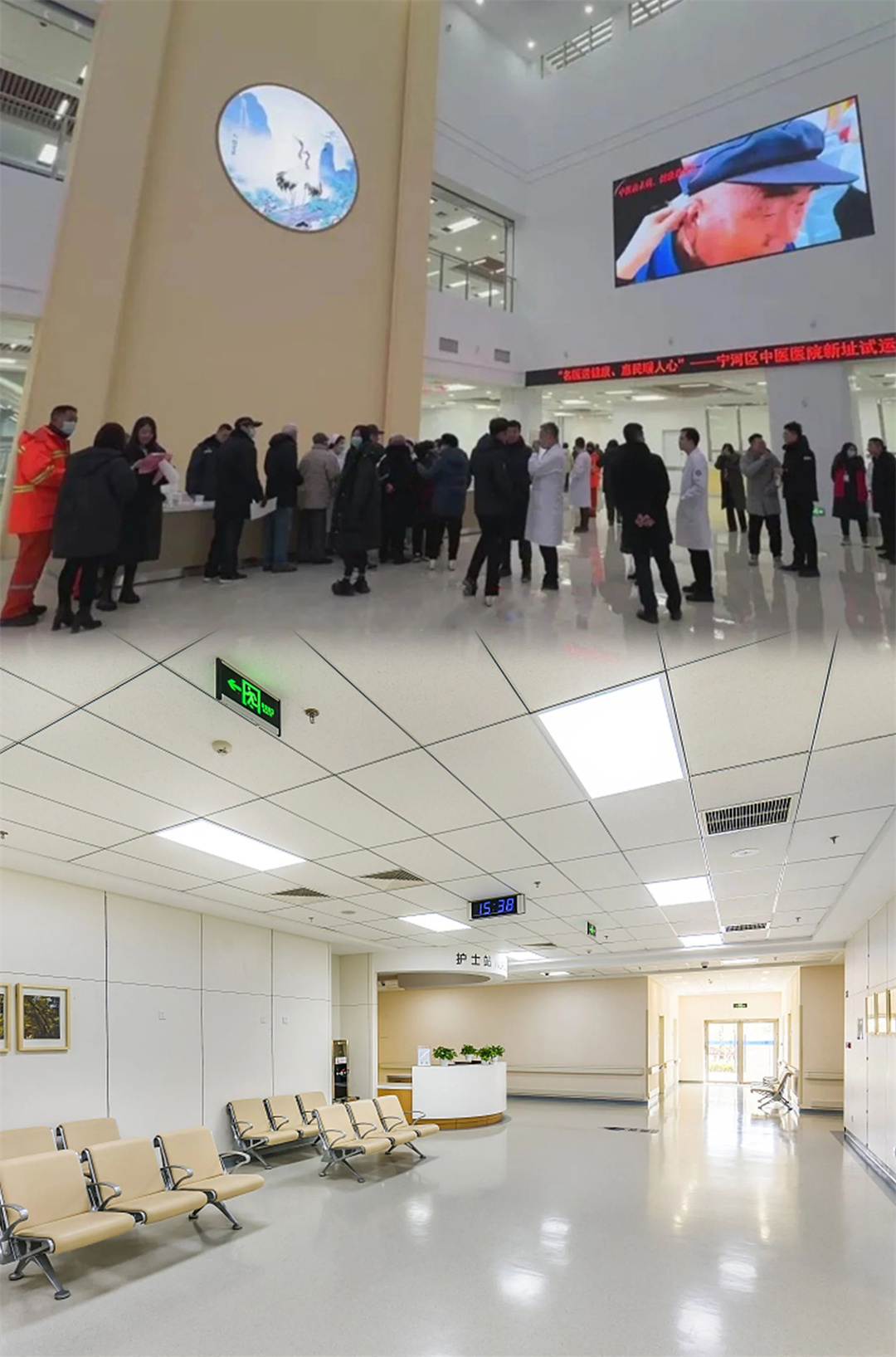The trial operation of the new location of Tianjin Ninghe District Chinese Medicine Hospital, which has attracted much attention recently, has commenced. The hospital’s fresh air conditioning system adopts Holtop’s digital energy recovery units, ensuring a high-quality, safe air environment and energy-efficient operation. This significantly enhances the hospital’s medical service capabilities and greatly improves patient satisfaction.
The Tianjin Ninghe District Chinese Medicine Hospital is a second-grade Class A hospital with traditional Chinese medicine as its distinctive feature. The relocation and construction project of the hospital is a key livelihood project determined by the District Committee and Government based on the overall development plan of the Qiaobei New Area. It is also a significant endeavor aimed at benefiting future generations, holding crucial significance in deepening medical and health reforms in Ninghe District, improving the medical environment for residents in the surrounding Qiaobei New Area, and effectively addressing the bottlenecks and constraints in the development of Chinese medicine hospitals.
Holtop has tailored optimized solutions for various areas within the hospital, including departments, wards, and lobbies. They have provided 75 sets of digital energy recovery fresh air units in multiple specifications and models. This expansion of the hospital campus aligns more closely with the modern hospital’s requirements for epidemic prevention, intelligence, and energy efficiency. It also supports the implementation of the “Healthy China” strategy by facilitating access to medical care for the public right in their local community.
Holtop’s digital intelligent fresh air system utilizes supply air units to deliver fresh outdoor air into indoor spaces through a piping system. Meanwhile, exhaust air units treat and expel indoor air outdoors. By integrating monitoring data of indoor air quality with preset control logic, the system organizes airflow within the hospital building, ensuring orderly circulation and maintaining air quality in functional rooms.
Hospital buildings consume a significant amount of energy for ventilation and air conditioning, with ventilation and air conditioning accounting for over 50% of the total building energy consumption. To effectively utilize the energy in exhaust air and reduce system loads, Holtop’s digital energy recovery units adopt a liquid circulation-based heat recovery method. The supply and exhaust air units are relatively independent, completely eliminating cross-contamination between supply and exhaust air while efficiently utilizing exhaust air energy. This achieves energy savings and significantly reduces operating costs.
Holtop’s digital intelligent air conditioning system features a sophisticated control system network. The central control system employs intelligent analysis of monitoring data to dynamically adjust air parameters and indoor pressure gradients in real-time according to varying requirements, ensuring swift responsiveness. The control system automatically generates operation trend reports, energy consumption reports, maintenance reports, and fault point alerts, providing comprehensive insights into the system’s operation status, equipment power consumption, component wear, and more.
Holtop’s digital fresh air conditioning system can be systematically customized to suit different hospital buildings, meeting the requirements for air quality, air safety, low energy consumption, and intelligence during the transition to epidemic prevention. It has been widely used in the construction of many hospitals in China and has achieved excellent results in practice.
Post time: Feb-04-2024














